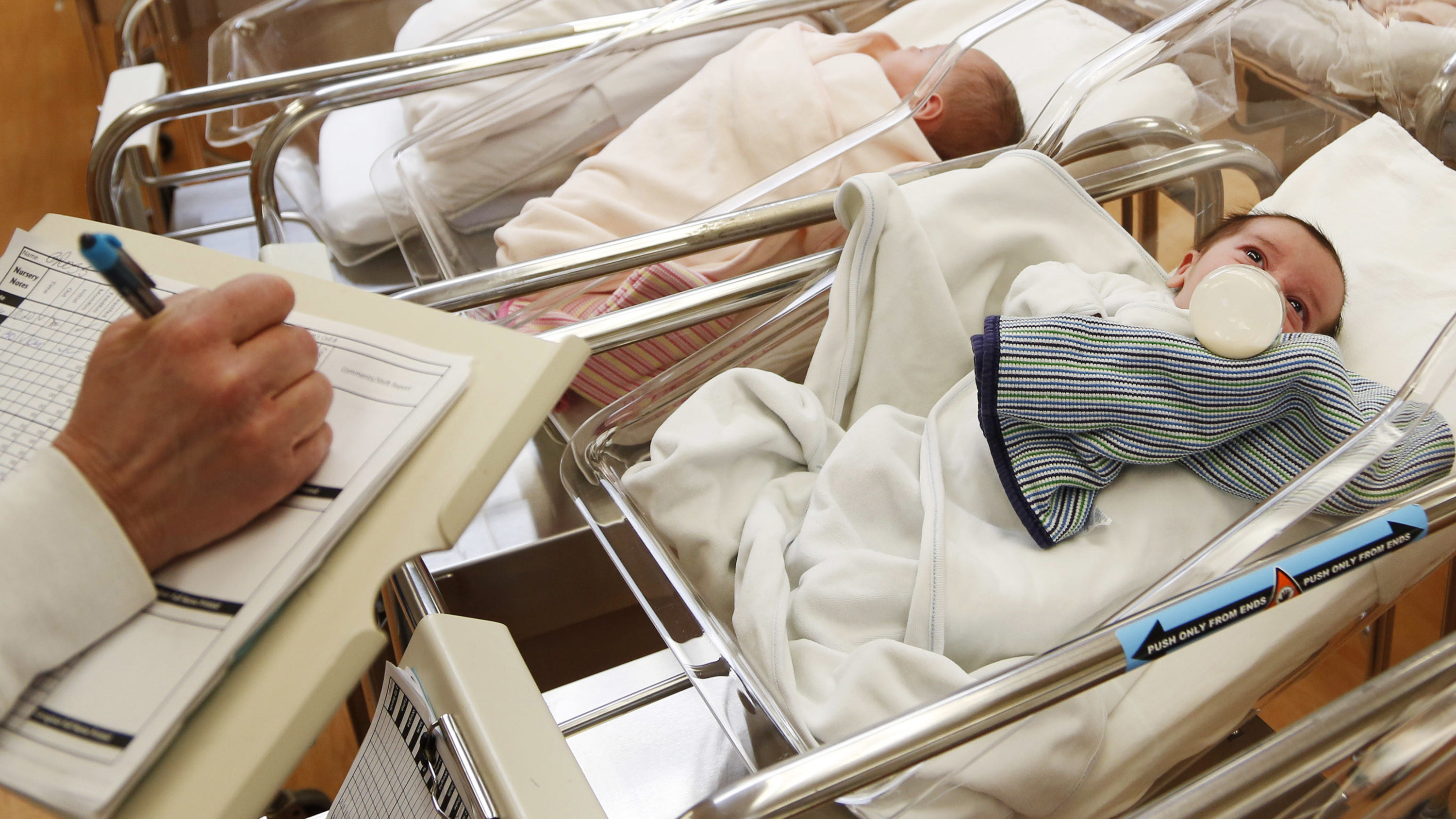
The birth rate fell for nearly every group of women of reproductive age in the U.S. in 2017, reflecting a sharp drop that saw the fewest newborns since 1978, according to a new report by the Centers for Disease Control and Prevention.
There were 3,853,472 births in the U.S. in 2017 – “down 2 percent from 2016 and the lowest number in 30 years,” the CDC said.
The general fertility rate sank to a record low of 60.2 births per 1,000 women between the ages of 15 and 44 – a 3 percent drop from 2016, the CDC said in its tally of provisional data for the year.
The results put the U.S. further away from a viable replacement rate – the standard for a generation being able to replicate its numbers.
“The rate has generally been below replacement since 1971,” according to the report from CDC’s National Center for Health Statistics.
The CDC calculates a “total fertility rate” by estimating how many babies a hypothetical group of 1,000 women would likely have over their lifetime. That measure now stands at 1,764.5 births per 1,000 women – a 3 percent drop from 2016. By contrast, the replacement rate is 2,100 births per 1,000 women.
“The decline in the rate from 2016 to 2017 was the largest single-year decline since 2010,” the CDC said.
The 2017 numbers also represent a 10-year fall from 2007, when the U.S. finally broke its post-World War Baby Boom record, with more than 4.3 million births.
Historically, the number of babies born in the U.S. has gradually risen since a sharp decline in the early 1970s. But that growth has been inconsistent, and over the same time frame, the birth rate has shown a general decline. The numbers are often subject to spikes and sudden dips, driven in large part by the country’s economic scene, generational size, and other factors.
The numbers seem to correspond with what the Census Bureau and others have been predicting for years: that America’s population growth will increasingly depend on immigrants, after decades in which the U.S. enjoyed a relatively high fertility rate when compared to other developed countries.
As The Associated Press reports, the U.S. birth rate is “still above countries such as Spain, Greece, Japan and Italy, but the gap appears to be closing.”
Broken out by age, the 2017 birth rate fell for teenagers by 7 percent, to 18.8 births per 1,000 – a record low. That figure is for women from 15–19 years old. For that same group, the birth rate has fallen by 55 percent since 2007 and by 70 percent since the most recent peak in 1991, the CDC said.
Women in their 40s were the only group to see a higher birth rate last year. Between the ages of 40 and 44, there were 11.6 births per 1,000 women, up 2 percent from 2016, according to the CDC’s provisional data.
Birth rates fell by 4 percent both for women from 20-24 years old and for women of ages 25-29.
For women in their 30s – an age group that had recently seen years of rising birth rates – the rate fell slightly in 2017. The drop included a 2 percent fall among women in their early ’30s, a group that still maintained the highest birth rate of any age group, at 100.3 births per 1,000 women.
For the third year in a row, both the preterm birth rate and the low birth weight rate rose. The CDC said the 9.93 percent rise in preterm births was due to late preterm births, and that the early preterm rate had not changed from 2016’s 2.75 percent.
Low birth weight – defined as newborns that weigh less than 5 lb. 8 oz. – rose slightly above the highest level previously recorded, with 2017’s 8.27 percent topping 2006’s 8.26 percent.
The overall cesarean delivery rate nudged upward in 2017, rising to 32 percent from 31.9 percent – still below the all-time high of 2009’s 32.9 percent.
The CDC also tallied births by race and cultural data (but it doesn’t yet have the data to compare those figures to the overall populations).
Here’s how the 2017 numbers were reported:
- All Races and Origins: 3,853,472
- White: 1,991,348
- Hispanic: 897,518
- Black: 560,560
- Asian: 249,214
- American Indian or Alaska Native: 29,878
- Native Hawaiian or Other Pacific Islander: 9,418
9(MDEwMjQ0ODM1MDEzNDk4MTEzNjU3NTRhYg004))
